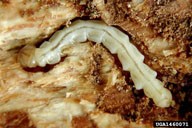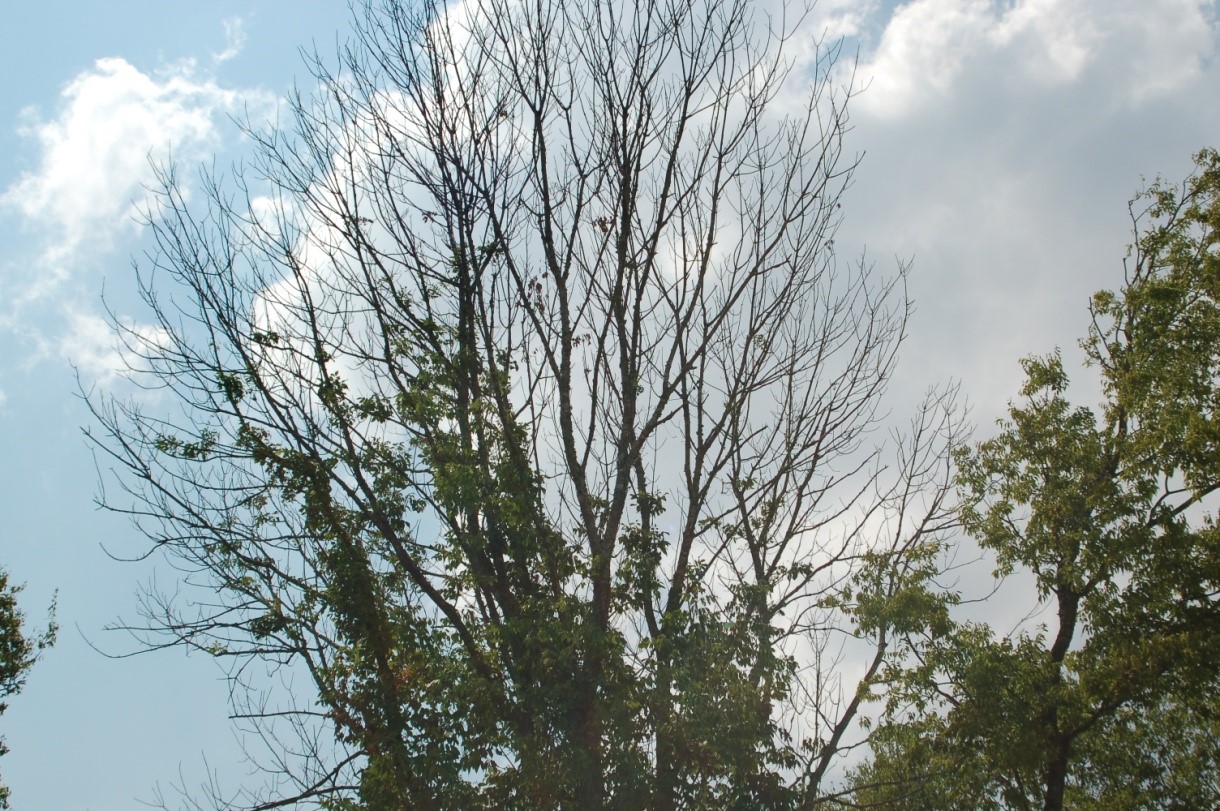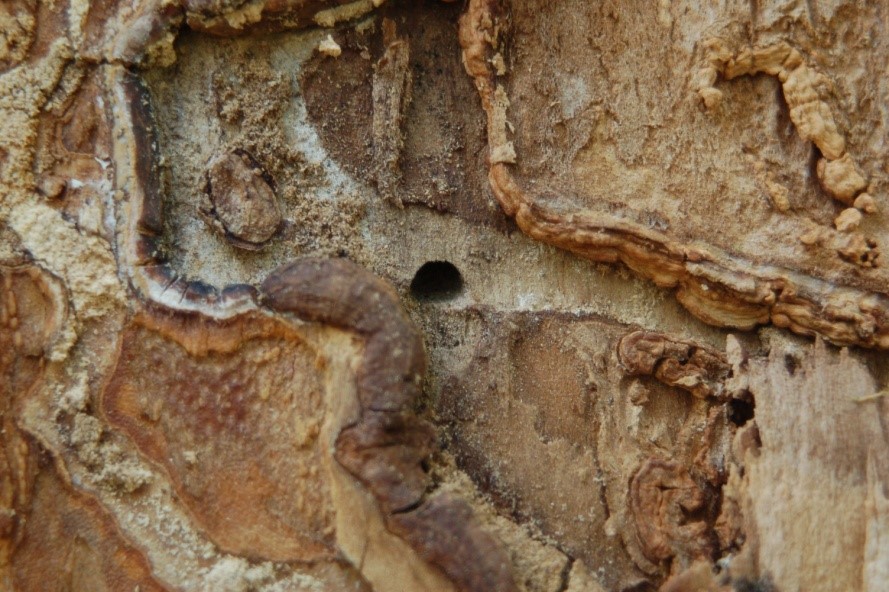




Importance: A non-native wood borer from Asia, the emerald ash borer (Agrilus planipennis) was first detected in Canton, Michigan near Detroit in 2002. It attacks all native species of ash (Fraxinus genus). In addition to ash trees, the emerald ash borer will attack the native fringetree (Chionanthus virginicus). Consequently, other trees in the olive family are also potential hosts to this exotic pest.
Identification: The adult emerald ash borer is metallic green and approximately 1/2 inch long. The bullet-shaped body is narrow and elongated. The head is somewhat flat with 2 large, black eyes and 2 short antennae. The creamy white larvae are 1 to 1.5 inches long. The eggs of the emerald ash borer turn yellowish-brown right before they hatch.
Life Cycle: The adult borers emerge from pupation near the surface of the tree from April to early July, with peak emergence occurring in June. When adult borers emerge, they create D-shaped exit holes approximately 3/16 inch in diameter in the infested trunk and branches. When the adults reach maturity, the males and females mate. Each female adult borer lays approximately 70 to 200 eggs in bark crevices or between bark layers, generally from May to August. Adult ash borers may continue to be active until October.
Signs and Symptoms: Adult wood borers cause minor damage to host trees, but the larvae are very destructive. They feed and create winding galleries underneath the bark, preventing the transportation of water and nutrients. Once the larvae reach a mature size, they tunnel into the outer sapwood (xylem layer) to pupate. When winter approaches, the emerald ash borer becomes inactive. This exotic insect will only overwinter as larvae or pupae. In the US, the entire life cycle of the emerald ash borer is from 1 to 2 years, depending on the climate of the area.
The emerald ash borer will infest the larger branches in the crown first, making the initial stage of attack unrecognizable. This action ultimately causes dying branches in the upper areas of the crown and yellowing of the foliage. Eventually, this exotic pest will move down the tree, attacking the lower branches and trunk. As a response to the infestation, the tree will produce epicormic shoots at the lower areas of the trunk. In the later stages of attack, the bark will sometimes split on the infested trunk and branches due to the callous tissue (cankers) in the phloem and cambium layers. Underneath the damaged bark are serpentine feeding galleries packed with frass and D-shaped exit holes. Woodpecker damage from predatory activity sometimes occurs. The entire crown of the infested tree eventually dies. Water flow and nutrients are disrupted causing the ash tree to succumb from the attack within 2 to 5 years.
Control: There is currently no known method to completely halt the spread of the emerald ash borer. Some landscapers and arborists, however, are using systemic insecticides. These insecticides can be applied to the soil, injected into the trunk or sprayed on the bark of recently attacked trees. They can also be used as a preventative method on ash trees near infested ones. The use of systemic and other approved insecticides is generally recommended for high-valued or ornamental trees. The effectiveness may last up to 2 years. Contact insecticides like the ones with the active ingredient carbaryl, permethrin or bifenthrin can be applied to affected ash trees, but the effectiveness is limited and short-term. Label instructions must be carefully followed when using any insecticide.
The primary recommendation, however, is to cut down the infested tree, chip the wood into 1 square inch or smaller pieces, and burn the debris at the original location. If burning is not possible, cut down the tree, chip the wood into 1 square inch or smaller pieces, and leave the debris on site. Tarpaulin or other types of plastic covering can be placed over the chipped debris for an extended period to reduce the emergence and survival of the pest. Since the borer can live in cut wood, do not move infested wood debris or firewood long distances into other areas. If travelling to another destination for recreational activities, buy local firewood. Preventing the movement of infested wood long distances and proper disposal can drastically reduce the spread of this exotic pest.
Photo Credit: BugWood.Org, Invasive.Org
Additional Resources